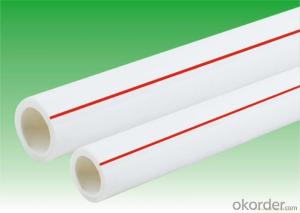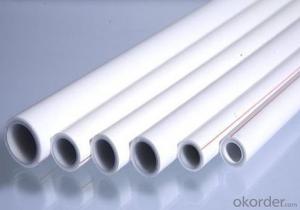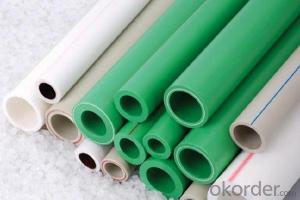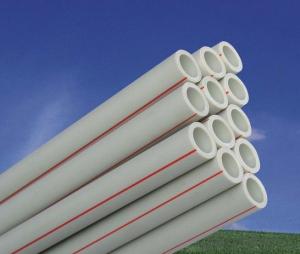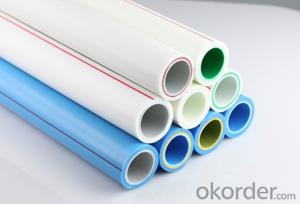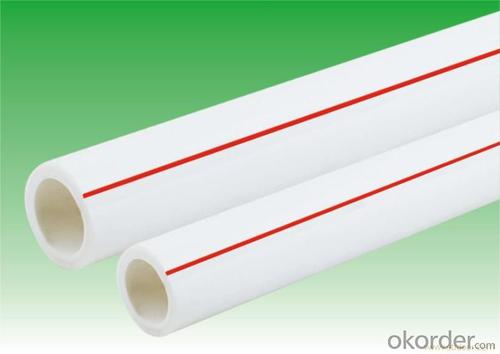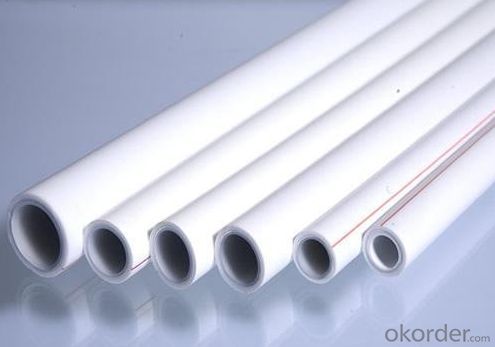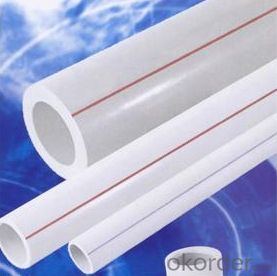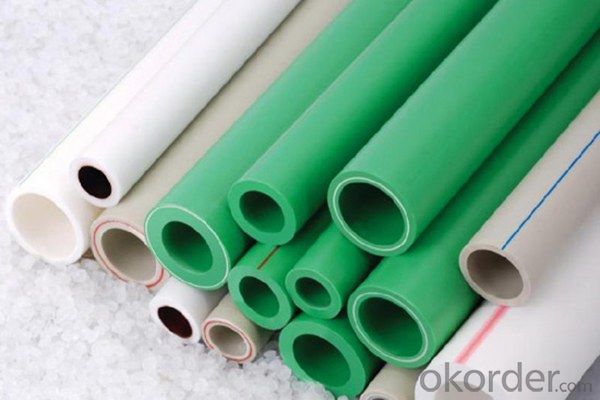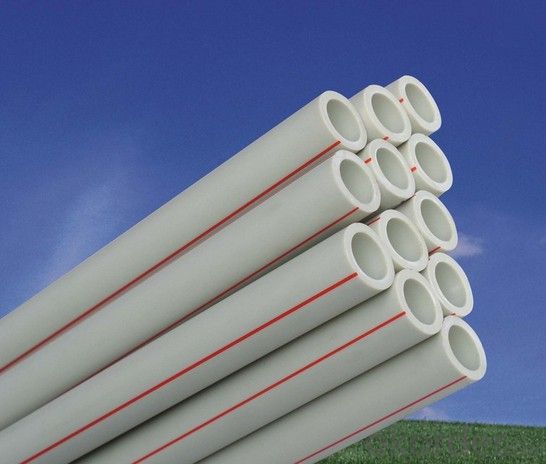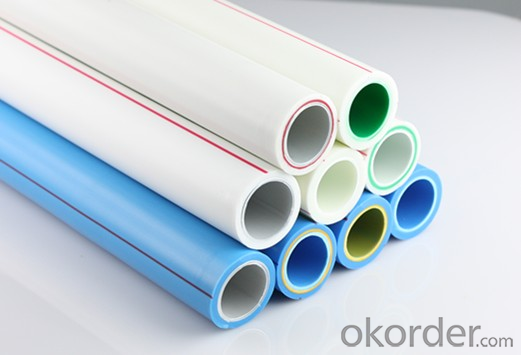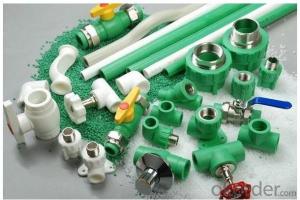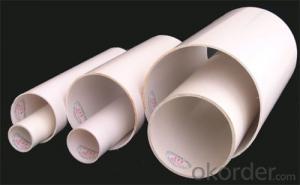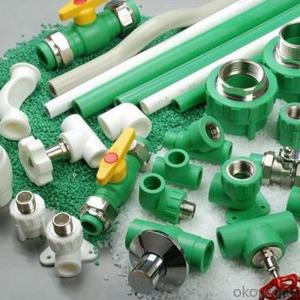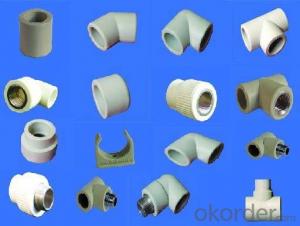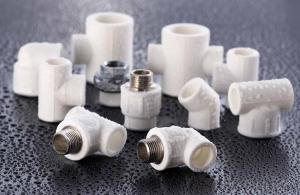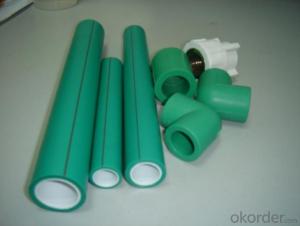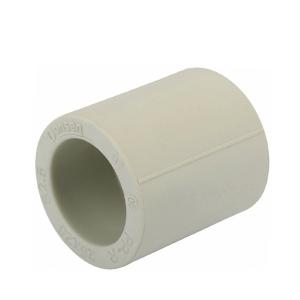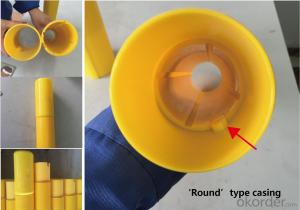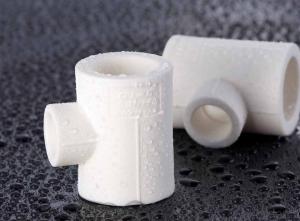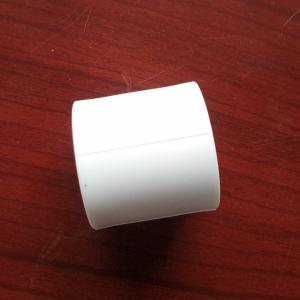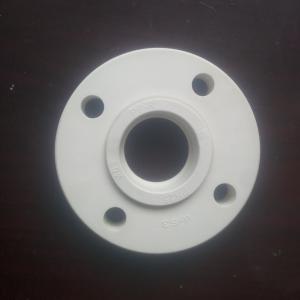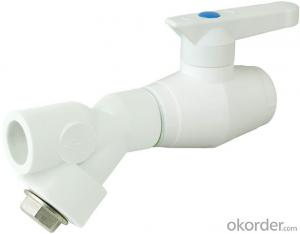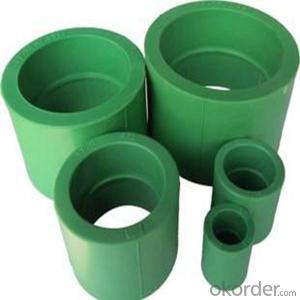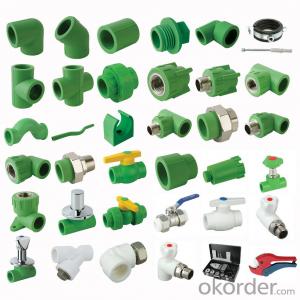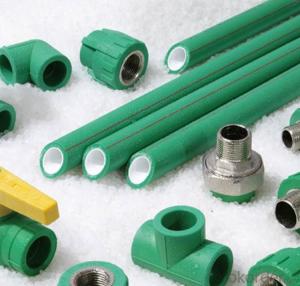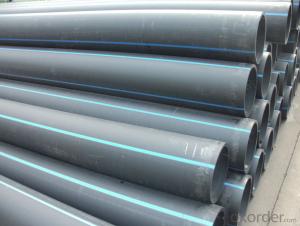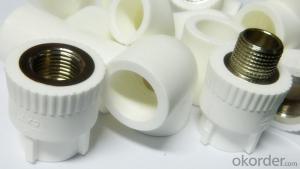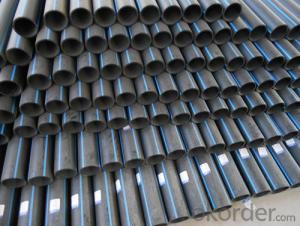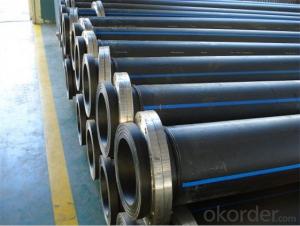Plumbing Plastic Pipe Fittings PPR Pipe Fittings PR Raw Material Environment Friendly
- Loading Port:
- Tianjin
- Payment Terms:
- TT OR LC
- Min Order Qty:
- 500 mm
- Supply Capability:
- 10000 mm/month
OKorder Service Pledge
OKorder Financial Service
You Might Also Like
Specification
discription:
1)Size:20-160mm
2)Pressure Rating:1.0Mpa ,1.6Mpa,2.0Mpa,2.5Mpa
3)Standard:DIN8077/8078.
1.ppr pipe and fitting size:
| Pressure | PN1.0Mpa | PN1.6Mpa | PN2.0Mpa | PN2.5Mpa |
outer diameter dn(mm) | Wall Thickness en(mm) | Wall Thickness en(mm) | Wall Thickness en(mm) | Wall Thickness en(mm) |
| 20 | 1.9 | 2.3 | 2.8 | 3.4 |
| 25 | 2.3 | 2.8 | 3.5 | 4.2 |
| 32 | 3.0 | 3.6 | 4.4 | 5.4 |
| 40 | 3.7 | 4.5 | 5.5 | 6.4 |
| 50 | 4.6 | 5.6 | 6.9 | 8.7 |
| 63 | 5.8 | 7.1 | 8.7 | 10.5 |
| 75 | 6.8 | 8.4 | 10.3 | 12.5 |
| 90 | 8.2 | 10.1 | 12.3 | 15.0 |
2.PPR pipe and fittings Feature:
High Temperature Resistance:In Long term normal use the working temperature is 70 °C,the maximum temperature is up to 95°C in short terms use.
Heat Preservation: low thermal conductivity which is only 1/1500 of brass pipe. And 1/250 of steel pipe. Higher Flow Capacity: smooth interior walls result in lower pressure loss and higher volume than metal pipes.
Non-toxic: no heavy metal additives, would not be covered with dirt or contaminated by bacterium.
Corrosion Resistant: resist chemical matters or electron chemical corrosion. can use more than 50 years on normal conditions
Lower Installation Costs: light weight and ease of installation, ppr pipe can reduce installation costs by as much as 50%over metal piping system.
Recycled and Environment-friendly
3.Applications:
1) Cold / hot water supply facilities for public buildings
2) Food, chemical, electronic industry pipeline networks; Such as
Pipeline networks for transporting all kinds of corrosive liquids
3) Drinking water production system pipeline networks; Such as
Pure water and mineral water
4) Air conditioning facility pipelines
5) Compressed gas pipeline networks for industry
6) Pipeline networks for swimming pools
7) Pipeline networks for solar energy facilities
8) Agriculture and garden production transporting systems
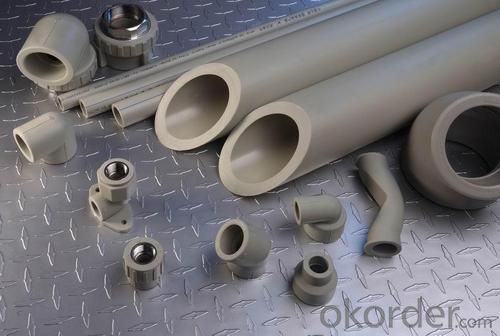
- Q: Are plastic pipe fittings resistant to UV degradation in indoor installations?
- Yes, plastic pipe fittings are generally resistant to UV degradation in indoor installations.
- Q: Can plastic pipe fittings be used for both hot and cold water applications?
- Yes, plastic pipe fittings can be used for both hot and cold water applications. They are designed to withstand a wide range of temperatures and are commonly used in plumbing systems for residential and commercial buildings. However, it's important to ensure that the plastic fittings are specifically labeled and certified for hot water use to ensure their durability and safety.
- Q: Are plastic pipe fittings resistant to high humidity environments?
- Yes, plastic pipe fittings are generally resistant to high humidity environments. They are designed to withstand moisture and humidity without corroding, which makes them a suitable choice for such conditions.
- Q: Antistatic flame retardant PE plastic pipe installation, what should pay attention to?
- When installing the pipe, the distance between the two socket flexible connections shall be no more than 3 meters. When the length compensation is needed, the pipe can be completely inserted into the socket and then out of the 10mm. Flexible connections between pipes and fittings can absorb thermal expansion of pipes up to 10mm.
- Q: Do plastic pipe fittings require any special adhesive or sealant?
- Yes, plastic pipe fittings typically require a special adhesive or sealant specifically designed for use with plastic materials. These adhesives or sealants help ensure a watertight and secure connection between the fittings and the pipes, preventing leaks and maintaining structural integrity. It is important to choose the appropriate adhesive or sealant based on the type of plastic and the specific application to ensure proper bonding and long-lasting results.
- Q: Can plastic pipe fittings be used in high-temperature applications?
- No, plastic pipe fittings are generally not suitable for high-temperature applications as they have lower melting points compared to other materials like metal.
- Q: What is the purpose of plastic pipe fittings?
- The purpose of plastic pipe fittings is to connect and join different sections of plastic pipes together, ensuring a secure and leak-free connection. These fittings allow for easy installation, maintenance, and repair of plumbing and irrigation systems. They also provide versatility and adaptability, as they can be used with various types and sizes of pipes.
- Q: Are plastic pipe fittings resistant to impact?
- Yes, plastic pipe fittings are generally resistant to impact due to their durable and flexible nature.
- Q: Are plastic pipe fittings suitable for chemical injection systems?
- Yes, plastic pipe fittings can be suitable for chemical injection systems, depending on the specific chemicals being used. It is important to consider the compatibility of the chemicals with the type of plastic used in the fittings to ensure they can withstand the chemical's corrosive properties and maintain structural integrity.
- Q: Can plastic pipe fittings be used for chemical mixing systems?
- Plastic pipe fittings can be used for chemical mixing systems, but it is important to select fittings made from chemically resistant materials that can withstand the specific chemicals being used.
Send your message to us
Plumbing Plastic Pipe Fittings PPR Pipe Fittings PR Raw Material Environment Friendly
- Loading Port:
- Tianjin
- Payment Terms:
- TT OR LC
- Min Order Qty:
- 500 mm
- Supply Capability:
- 10000 mm/month
OKorder Service Pledge
OKorder Financial Service
Similar products
Hot products
Hot Searches
Related keywords
